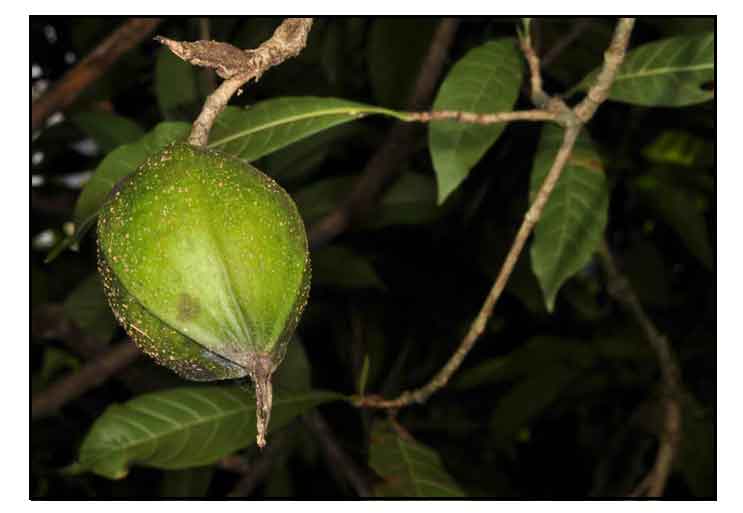
Family • Rubiaceae
Malabayabas
Gardenia pseudopsidium (Blanco) F.-Vill.)
| Scientific names | Common names |
| Gardenia pseudopsidium (Blanco) F.-Vill. | Barambang (Pamp.) |
| Gardenia barnesii Merr. | Bayag-usa (Tag.) |
| Sulipa pseudopsidium Blanco | Bukok (S. L. Bis.) |
| Bunutan (Neg.) | |
| Butunalaga (Neg.) | |
| Gililak (Tag.) | |
| Kalanigai (P. Bis.) | |
| Kalanigi (P. Bis.) | |
| Kalapi (Tag.) | |
| Kasablan (Mag.) | |
| Kasikas (Ig.) | |
| Lamog (Mag.) | |
| Lomo-lomo (Bag.) | |
| Malabayabas (Tag.) | |
| Malatambis (Chab.) | |
| Sulipa (Tag.) | |
| Sulipa pseudopsidium Blanco is an unplaced name. KEW: Plants of the World Online | |
| Gardenia pseudopsidium (Blanco) Fern.-Vill. is a synonym of Sulipa pseudopsidium Blanco. KEW: Plants of the World Online | |
|
Gen info Distribution Constituents Properties Studies Availability |
Updated March 2023 / May 2015
![]()
 |
PHOTOS / ILLUSTRATIONS |
| IMAGE SOURCE: / Rubiaceae: Gardenia pseudopsidium / Fruit / PHILIPPINES: Panay:: Antique prov. San Remegio Municipality, Brgy Aningalan; coordinates of general area 10 48 56.00 N, 122 10 53.70 E GOOmap VEmap , 16-Apr-11./ Click on Image for source image / Copyright © 2011 by P.B. Pelser & J.F. Barcelona / Phytoimages |
| Additional
Sources and Suggested Readings (1) A REVISION OF PHILIPPINE GARDENIA (RUBIACEAE) / K. M. Wong / Yee Wen Low / Edinburgh Journal of Botany 03/2011; 68(01):11 - 32. DOI: 10.1017/S0960428610000272 (2) Gardenia pseudopsidium (PROSEA) / Pl@ntUse |
α•(5) |
DOI: It is not uncommon for links on studies/sources to change. Copying and pasting the information on the search window or using the DOI (if available) will often redirect to the new link page. (Citing and Using a (DOI) Digital Object Identifier) |
| List of Understudied Philippine Medicinal Plants |
α•(5) |
 |


